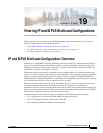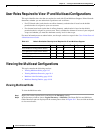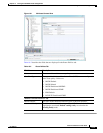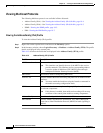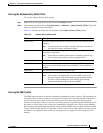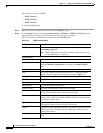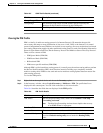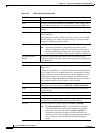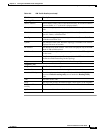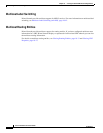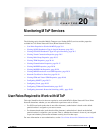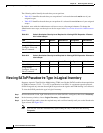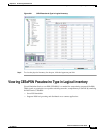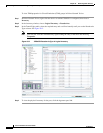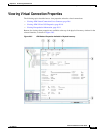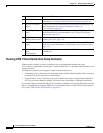
19-9
Cisco Prime Network 4.0 User Guide
OL-29343-01
Chapter 19 Viewing IP and MPLS Multicast Configurations
Viewing the Multicast Configurations
Topology Tab
Source Address The IP address of the source of the multicast entry. In case the IP address
is not available, a “*” or 0.0.0.0 is displayed here.
Group Address The multicast group address or prefix for which the entry is associated
with.
PIM Mode The PIM mode of the topology entry, which can be Sparse, Source
Specific, Dense, or Bidirectional.
Tree Type The MDT tree type for the route entry, which can be Shortest Path Tree
or Rendezvous Point Tree.
Uptime The amount of time from which the topology is available. This value is
displayed in terms of seconds.
RP Address The Rendezvous Point address. This value is displayed only if the PIM
Mode is SM or Bidirectional.
Join Prune Status Indicates whether a join or prune message is sent to the RPF neighbor
for the route.
RPF The IP address and interface ID, along with the MoFFR information, of
the Reverse Path Forwarding for the topology.
Flags The comma separated flag information for this topology.
Neighbors Tab
Neighbor IP Address The IP address of the neighbor.
Interface Name The interface name on which the neighbor can be reached.
Associated Entity The link to the associated entity, which when clicked will highlight the
associated Default routing entity record under the Routing Entity
node.
VRF The name of the VRF.
Flags The flags that provide information about various states of the neighbor.
Designated Router
Priority
The priority of the PIM interface for DR election. The default value is 1.
UpTime The amount of time from which the interface is available.
Table 19-6 PIM Profile Details (continued)
Field Name Description



